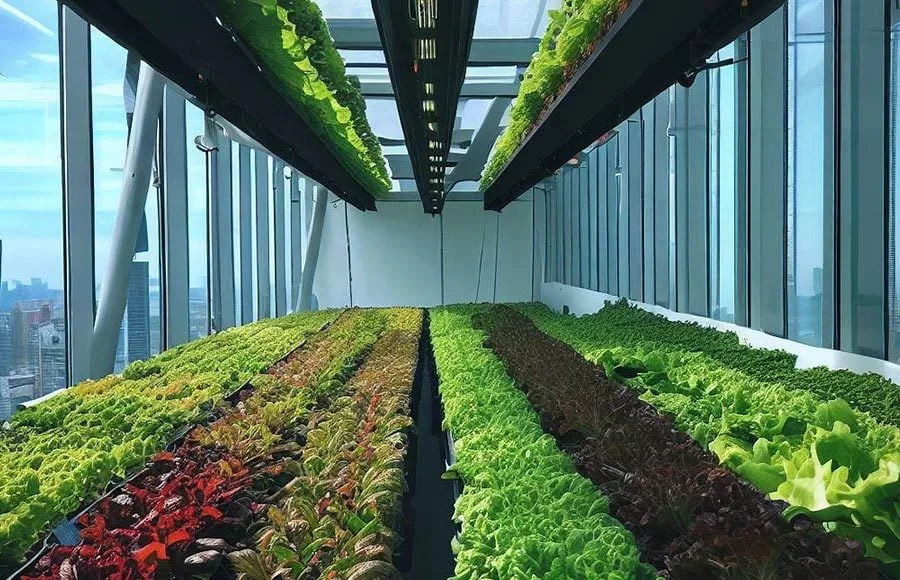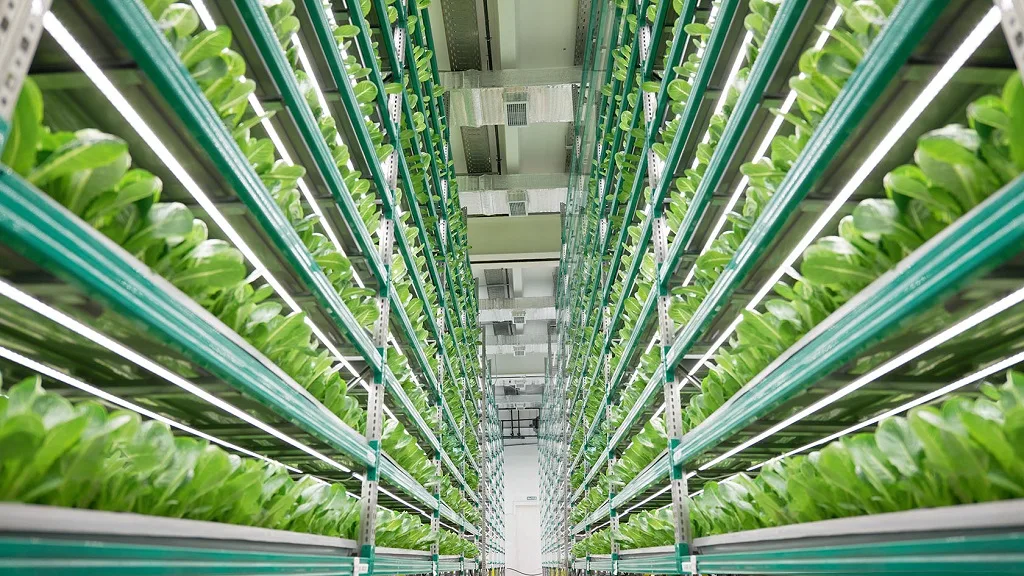
Vertical Farm Technology Review
Vertical farming technology represents a revolutionary approach to agriculture, designed to maximise space and efficiency by growing crops in vertically stacked layers. This method leverages controlled environment agriculture (CEA) to optimise plant growth. The concept dates back to the early 20th century but gained significant traction with the development of modern technology in the 2000s. The idea was popularised by Dr. Dickson Despommier, whose work highlighted its potential to address urban food production challenges.
Since its initial conceptualisation, vertical farming has evolved with advancements in hydroponics, aeroponics, and advanced LED lighting. The technology aims to create a self-sustaining, highly efficient farming system that reduces the dependency on traditional land resources. Early implementations began in the 2010s, with numerous startups and research institutions exploring its potential on a larger scale.
How is it Arranged and How Does it Work?
Vertical farms are structured as multi-layered systems where crops are grown in vertically stacked trays or towers. These systems often use hydroponics or aeroponics to deliver nutrients directly to the plant roots, reducing the need for soil. The environment within these farms is meticulously controlled, including factors such as light, temperature, humidity, and CO2 levels, which are optimised for plant growth using advanced technology.
The workings of a vertical farm are based on creating a closed-loop system. Water and nutrients are recycled, minimising waste and environmental impact. LED lighting systems mimic natural sunlight, ensuring crops receive the optimal light spectrum for photosynthesis. This setup allows for year-round production, independent of seasonal variations and external weather conditions.
What Are the Advantages of This Technology?
Vertical farming offers several significant advantages over traditional agriculture. Firstly, it greatly reduces the need for arable land, enabling urban areas to integrate food production within city environments. This localisation reduces transportation costs and associated carbon emissions, contributing to a more sustainable food supply chain.
Secondly, vertical farming systems use significantly less water compared to conventional farming. The closed-loop hydroponic and aeroponic systems recycle water, making them highly efficient in resource use. Additionally, these systems are less susceptible to pests and diseases, reducing the need for chemical pesticides and herbicides.
Lastly, vertical farms can be integrated into existing buildings, such as warehouses and skyscrapers, utilising underused urban spaces. This integration can contribute to food security in densely populated areas and offer fresh produce close to where people live and work.
Where is it Already Used?
Vertical farming has been successfully implemented in various locations around the world. Notable examples include Singapore, which has embraced vertical farming to address its limited land resources and food import dependency. Facilities such as Sky Greens and the Citiponics farm showcase the city’s commitment to innovative agricultural practices.
In the United States, vertical farms like AeroFarms in Newark and Plenty in San Francisco are leading the way in urban agriculture. These farms have demonstrated the scalability and efficiency of vertical farming technologies, providing fresh produce to local markets and grocery stores.
In Japan, where space is at a premium, companies like Spread and Mirai are pioneering vertical farming techniques. These operations are integrated into existing infrastructure, reflecting the technology’s adaptability to high-density environments.
Europe is also exploring vertical farming, with projects in cities like Amsterdam and Berlin focusing on reducing food miles and enhancing local food production. These initiatives highlight the technology’s growing appeal across different regions and its potential to transform urban agriculture.

Where Else Can it Be Used?
Vertical farming holds promise beyond urban environments. It can be applied in remote and arid regions where traditional farming is challenging due to limited water and soil resources. By utilising controlled environments, vertical farms can grow crops in areas where conventional agriculture might fail.
The technology also has potential applications in disaster-stricken regions. In situations where traditional supply chains are disrupted, vertical farms could provide a reliable source of fresh food, supporting recovery and resilience efforts.
Furthermore, vertical farms could be implemented in space exploration missions. With the advancement of space travel and long-term missions, having self-sustaining food production systems onboard spacecraft or extraterrestrial colonies could become crucial for supporting astronauts’ nutritional needs.
How Promising is it?
The promise of vertical farming lies in its ability to address multiple challenges faced by traditional agriculture. As urban populations continue to grow, vertical farming offers a viable solution for producing food in cities, reducing reliance on rural land and mitigating environmental impacts associated with transportation.
Technological advancements are continually improving the efficiency and cost-effectiveness of vertical farms. Innovations in LED lighting, automation, and nutrient delivery systems are making vertical farming more accessible and scalable. As these technologies evolve, the potential for widespread adoption increases.
However, there are challenges to overcome, including high initial setup costs and the need for ongoing research to optimise production processes. Despite these hurdles, the ongoing investment and interest in vertical farming indicate a promising future, with the potential to revolutionise food production and contribute to a more sustainable world.
